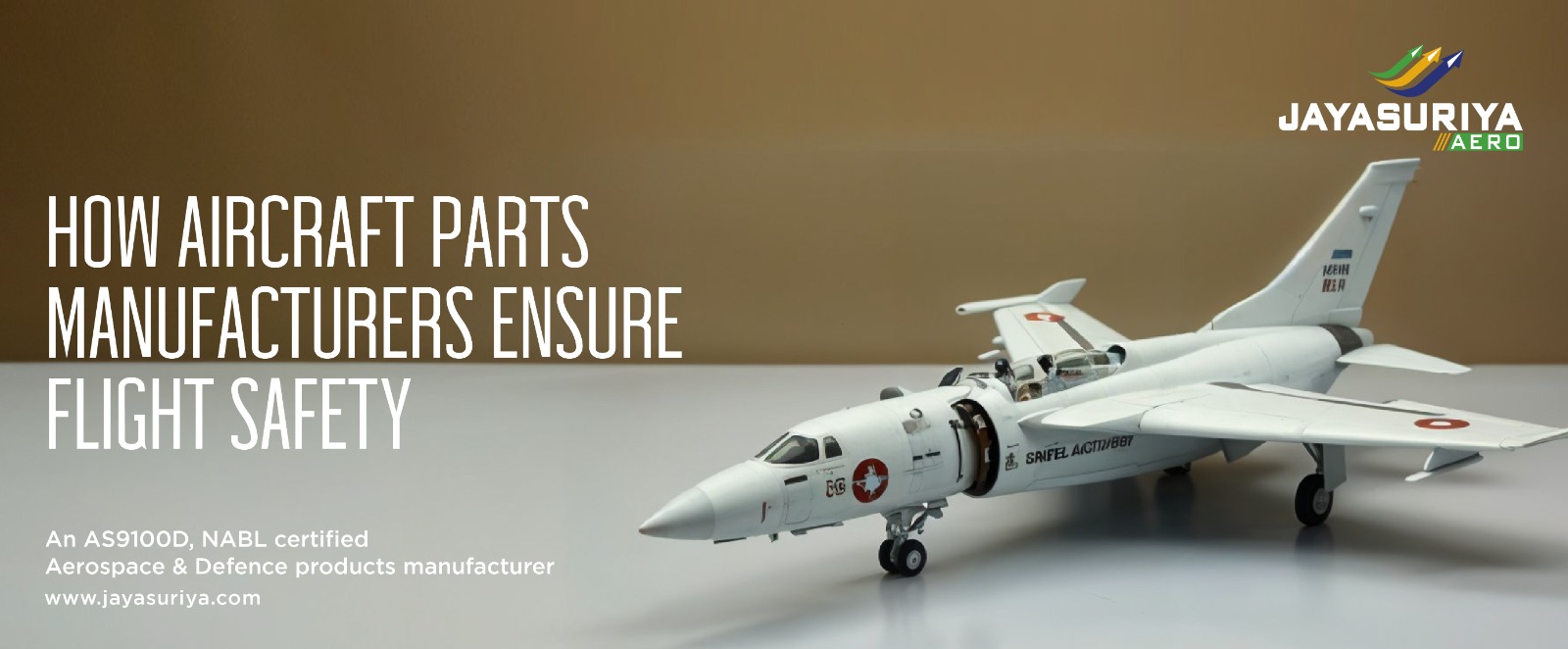Flight safety is not just about skilled pilots or sophisticated avionics; it begins long before the aircraft leaves the ground. One of the most critical contributors to aviation safety is the uncompromising quality and precision of the aircraft’s physical components. Behind the scenes, aircraft parts manufacturers play a pivotal role in ensuring every flight is as safe and reliable as possible.
Let’s explore how these manufacturers guarantee flight safety through quality control, advanced manufacturing techniques, rigorous testing, and regulatory compliance.
Why Aircraft Parts Matter in Flight Safety
Every bolt, bracket, and bearing in an aircraft has a role to play in keeping passengers and crew safe. A minor flaw in a component—whether structural or mechanical—can have significant consequences. This is why aircraft parts manufacturers follow strict protocols and industry standards to meet the performance and reliability requirements of modern aviation.
Components must be:
- High strength-to-weight ratio
- Corrosion-resistant
- Heat-tolerant
- Precisely engineered
These parts are essential in the performance of flight-critical systems such as engines, landing gear, hydraulics, control surfaces, and avionics enclosures.
Quality Control: The First Line of Defense
Quality control is at the heart of every manufacturing process in the aerospace industry. Manufacturers implement multi-layered quality systems that ensure every component, no matter how small, meets the required specifications.
Key quality control practices include:
- ISO 9001 and AS9100 certification
- Statistical process control (SPC)
- In-process inspections at multiple stages
- First article inspections (FAI)
These measures are designed to catch defects early and maintain consistency across production batches. Ensuring quality from the outset reduces the risk of failure during assembly or operation.
Advanced Manufacturing Technologies
To meet the exacting standards of modern aviation, aircraft parts manufacturers leverage the latest manufacturing technologies, such as:
1. CNC Machining
Computer Numerical Control (CNC) machines produce aerospace components with precision tolerances as small as a few microns. This ensures consistent quality across parts used in critical applications.
2. Additive Manufacturing (3D Printing)
In recent years, 3D printing has been used to produce lightweight, complex geometries with minimal waste—especially for custom or low-volume parts.
3. Multi-Axis Milling and Turning
For components that require intricate curves and details, multi-axis machining allows for the production of parts with high dimensional accuracy.
Using these technologies, manufacturers can achieve the consistency and repeatability demanded in aerospace.
Rigorous Testing for Safety and Reliability
Before reaching the assembly line, every part goes through a series of mechanical, thermal, and chemical tests to verify performance. These include:
- Non-destructive testing (NDT): Detects hidden flaws using X-ray, ultrasonic, magnetic particle, or dye penetrant methods.
- Fatigue testing: Simulates long-term stress and vibration cycles to test durability.
- Environmental testing: Assesses the impact of humidity, corrosion, temperature extremes, and UV exposure.
- Pressure and leak testing: Critical for hydraulic and pneumatic systems.
Such rigorous testing protocols ensure that only defect-free parts make it into the aircraft, directly contributing to aviation safety.
Material Selection and Traceability
A major factor in aircraft part reliability is the selection and traceability of materials. Manufacturers must carefully choose metals, composites, and coatings that can withstand the operational stresses of flight.
Common materials include:
- Titanium and its alloys (for strength and lightness)
- Aluminum alloys and carbon composite (for structural elements)
- High-temperature superalloys (used in engine parts)
Each material batch comes with certifications and traceability records. From raw material to finished product, complete traceability helps identify the source in case of failures or recalls—an essential practice in ensuring accountability and safety.
Compliance with Global Aviation Standards
Aircraft parts must comply with a variety of international aviation regulations. This ensures that no matter where an aircraft is manufactured or operated, the parts meet a universally accepted standard of safety and quality.
Relevant standards include:
- FAA (Federal Aviation Administration – USA)
- EASA (European Union Aviation Safety Agency)
- DGCA (Directorate General of Civil Aviation – India)
- AS9100 (global aerospace quality management standard)
Aircraft parts manufacturers must demonstrate that they adhere to these standards through documentation, audits, and product certifications. Compliance is not optional—it’s a legal and ethical requirement.
Continuous Improvement and Feedback Loops
Top manufacturers know that maintaining safety is not a one-time achievement but an ongoing process. They invest in continuous improvement strategies, including:
- Failure Mode and Effects Analysis (FMEA)
- Six Sigma and Lean Manufacturing
- Customer feedback and field performance tracking
- Corrective and preventive action (CAPA) systems
These practices ensure that when failures or inefficiencies are detected, solutions are swiftly implemented across the production process.
Collaboration with OEMs and Airlines
Many aircraft parts manufacturers work closely with original equipment manufacturers (OEMs), aerospace design engineers, and airline maintenance teams. This collaboration allows manufacturers to better understand how their parts are used in real-world conditions and optimize them for performance and longevity.
Examples of such collaboration include:
- Custom-designed aerospace components tailored to specific aircraft platforms
- Co-development of lightweight alternatives to traditional parts
- Feedback from maintenance crews on part durability and ease of replacement
This synergy ensures that safety is built into the part at every stage—from design to operation.
Why Your Choice of Manufacturer Matters
When it comes to aircraft safety, not all manufacturers are created equal. Choosing the right supplier can dramatically impact operational safety, maintenance costs, and aircraft reliability.
What to look for:
- Proven industry certifications
- Modern manufacturing and testing capabilities
- Experience with flight-critical components
- Transparent documentation and traceability
Jayasuriya AERO: Elevating Standards in Aerospace Manufacturing
At Jayasuriya AERO, we understand that flight safety begins with reliable parts. As trusted aircraft parts manufacturers, we are committed to precision, safety, and innovation. From structural aerospace components to engine-related parts, our products are engineered to meet the rigorous demands of global aviation.
Our advanced production methods, stringent quality checks, and adherence to international standards ensure that every part we produce plays its role in keeping aircraft safe in the skies.
When safety is non-negotiable, choose Jayasuriya AERO.

